#Isabel de Portugal
Text
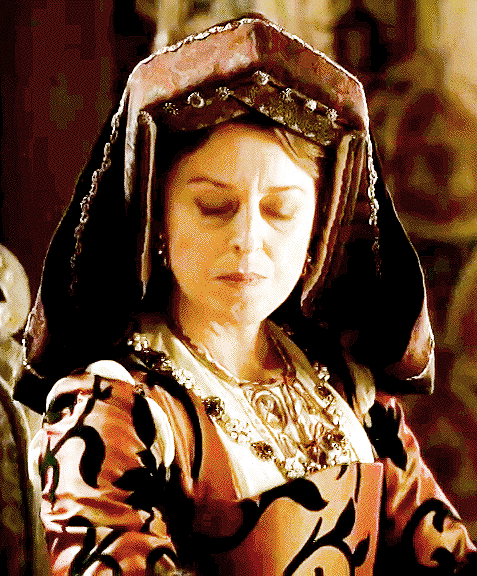
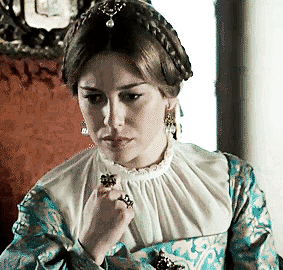




Katherine of Aragon & Isabel of Portugal
Holy Roman Empress Isabel of Portugal was interested in the case of the repudiation of her aunt the Queen of England, and she was an advocate of her cause. Katherine of Aragon knew that her nephew, Carlos V, was her only chance to defend her case successfully and that is why she wrote him. Since the death of King Fernando II of Aragon in 1516, her nephew had been her paterfamilias, the head of the Spanish Monarchy, and the most powerful monarch in Europe. Katherine played an active role as ambassadress in the Tudor court, and she was one of his biggest European supporters. Seven months after Katherine’s plead, Carlos sent a letter to his wife Isabel in Spain who was acting as his Governor during his absence. He entrusted her with a mission, to find evidence and witnesses that could help their aunt in her cause to defend her marriage.

The Empress rejoiced that her husband Carlos V was so determined to defend the right of Queen Katherine, which, indeed, it were his duty to do; not only because she was his aunt but also because the case closely concerns the Christian religion itself. Isabel sent several orders to different parts of the Iberian Peninsula to gather evidence. The first was directed to the officers in the Chancillería in Aragon to look for any legal documents related to the
marriage negotiations. Another order was sent to elaborate a list of people who were still alive and who had been witnesses in the negotiations concerning Katherine’s marriages. A second group of people were those who had accompanied Katherine to England in 1501. The third order included a questionnaire for these people that directly addressed Katherine’s virginity.
Katherine herself had written to her a full account of the case, of which copies were made to be sent to the Universities of Castile, Aragon, Valencia and Catalonia, with the orders of the Empress that the Universities are to study the case very carefully and send their opinions to her. Originals of the same shall be sent to the Emperor, and copies to Micer Mai in Rome.
In May 1531 a letter was rediscovered in Spain, written by Katherine’s father Fernando to his ambassador in Rome, Francisco de Rojas, which appeared to change everything. Katherine must have been excited to hear that it confirmed that Arthur had not consummated the marriage but that Rojas was to apply for a dispensation anyway in order to satisfy the English.
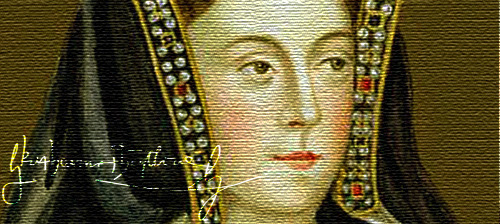
Empress Isabel was in contact with her ambassadors in Rome, France and London. Dr Pedro Ortiz, an expert in law and Lecturer at the University of Salamanca designated to defend Katherine’s case in the papal court, wrote to the Empress urging her to collect Katherine's letters as the future relics of a holy martyr. In another letter, Ortiz implored the Empress to pray for Katherine and Mary. He believed that they are in great danger.
The death of Katherine of Aragon on 7 January 1536 at Kimbolton Castle, was really sad for the Spanish Royal family. Carlos V was in Naples. By February 1, the Emperor wrote to his wife, who was acting as his regent in Spain, saying that he had heard of Katherine’s death “five or six days” previously. He told her that he and his court had donned mourning and that suitable obsequies had been performed.
Five or six days ago the news of the demise of her most Serene Highness the queen of England arrived, which I felt deeply, as you may imagine. May God receive her in Paradise, which she certainty deserved on account of her extreme goodness and virtue, and the excellent life she led. About her last illness and death the accounts differ. Some say that it was produced by a painful affection of the stomach, which lasted upwards of 10 or 12 days; others that the distemper broke out all of a sudden after taking some draft, and there is a suspicion that there was in it that which in similar cases is administered. I do not choose to make such an affirmation, nor do I wish to have it repeated as coming from me, but nothing can prevent people from judging and commenting upon the event according to their own feelings. Of the Princess, my cousin, I hear only that she is inconsolable at the loss she has sustained, especially when she thinks of her father’s past behaviour towards herself, and of the little favor she can expect for the future. I trust, however, that God will have pity on her, and will not permit the great injustice which has been shewn her to remain with- out some reparation. I have put on mourning, and ordered all the grandees around me, the high officers of this household, as well as the gentlemen of my chamber and table, to do the same, and I myself intend wearing it until I go to Rome. The exequies have been performed here as is customary in such cases; there, where you are, the same ought to be done, as this is but fitting.
Isabel felt Katherine’s death and she was surprised “by what is said of her death”, the rumors about a possible poisoning of her aunt. The Empress also received a letter from Dr Ortiz, enclosing a copy of one from ‘that glorious martyr’ Katherine herself ‘by which the Empress will see the perfection and heroic virtues to which she attained’. Katherine would be a ‘true patroness and advocate of the Empress in Heaven’.
Sources:
Amy Licence, Catherine of Aragon: An Intimate Life of Henry VIII's True Wife
Emma Luisa Cahill Marrón, Article: “Royal Sexualized Bodies at the Tudor Court”
: Questioning an Honest Queen: The Scrutiny Around Queen Catherine of Aragon's Virginity
Julia Fox, Sister Queens: The Noble and Tragic Lives of Katherine of Aragon and Juana, Queen of Castile
#catherine of aragon#katherine of aragon#catalina de aragon#isabella of portugal#isabel de portugal#english history#spanish history#women in history
26 notes
·
View notes
Text


Period dramas dresses tournament: Red dresses Round 3- Group C: Guinevere Pendragon, Merlin (gifset) vs Isabella of Portugal, Carlos rey emperador (gifset)
#period drama dresses tournament#tournament poll#tumblr tournament#polls#fashion poll#guinevere#guinevere pendragon#merlin#merlin bbc#isabella of portugal#isabel de portugal#carlos rey emperador#red r3
21 notes
·
View notes
Text
After his mother’s death, the prince (Philip) turned his devotional attention increasingly to his namesake, St Philip, on whose feast day he became a knight of the Golden Fleece (1533) and recovered from smallpox (1536) - events which showed that the saint was ‘looking out’ for him. On that same day in 1539 his mother died, a coincidence that further reinforced Philip’s devotion to his patron, because it suggested further that the saint had intervened to escort his mother to heaven. Henceforth he would combine celebration of his saint’s day with commemoration of his mother’s death.
Imprudent King: A New Life of Philip ii by Geoffrey Parker. Page 84
#philip ii of spain#philip ii#felipe ii#felipe ii de espana#Isabella of Portugal#Isabel de Portugal#Catholic#?#I think it’s an appropriate tag considering the subject#history#Spanish history#now this may be a bit out of place since I didn’t make this post around the specific day of the quote#buuuuut#I’ve elected to pretend it doesn’t matter
4 notes
·
View notes
Text
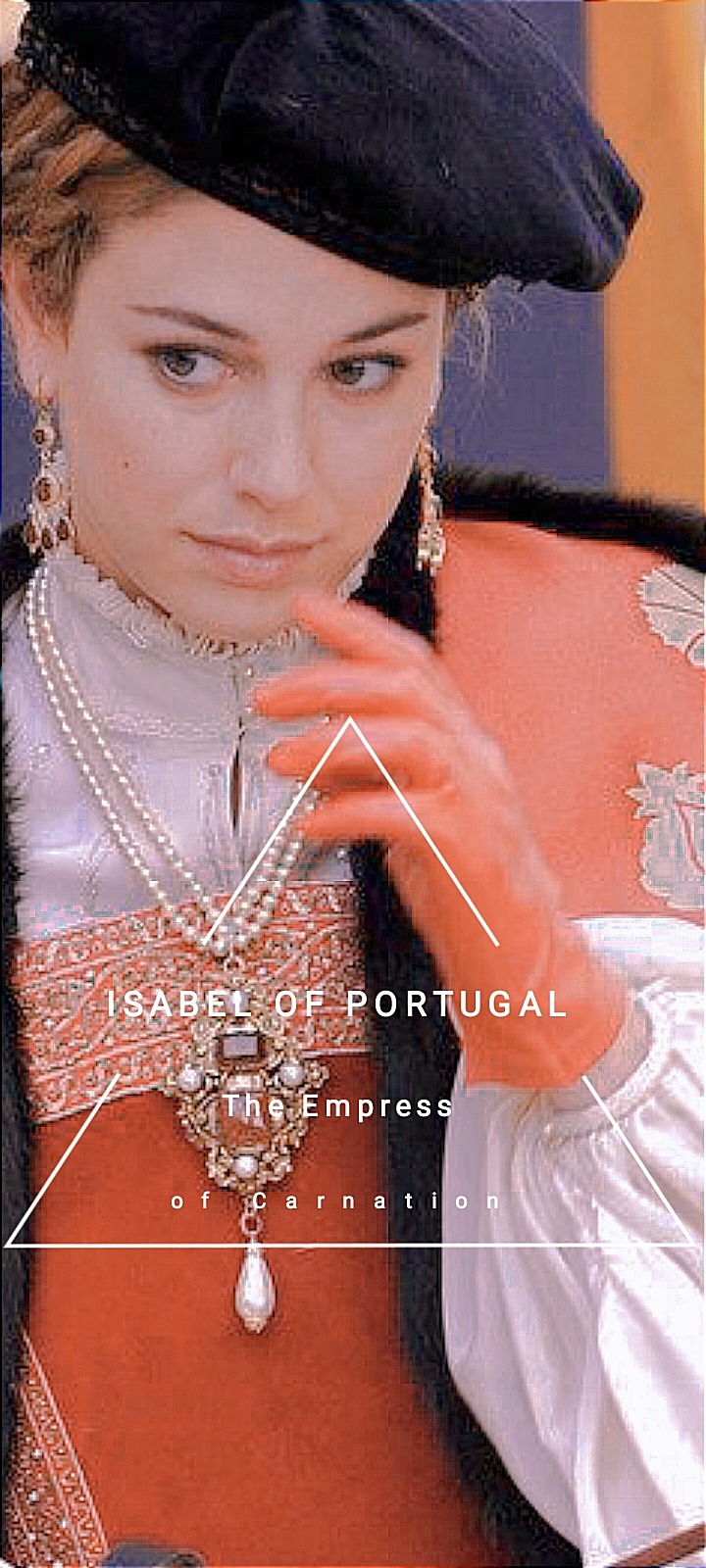

Isabel effectively defended the royal power in order to ensure the monarch's authority, as a response towards the previous rebellions against her husband Carlos for his foreign relationships. Isabel was a profound expert of the problems of the peninsular kingdoms, intransigently defending the good common to particular interests. At the external level, her sensible actions were decisive in the defence of the coasts of the peninsula and of North Africa, which were infested by piracy. Through her regencies, she ensured that Spain remained independent of the empire's expensive military policies and thus relatively prosperous during her lifetime.
21 notes
·
View notes
Text
Isabel de Portugal
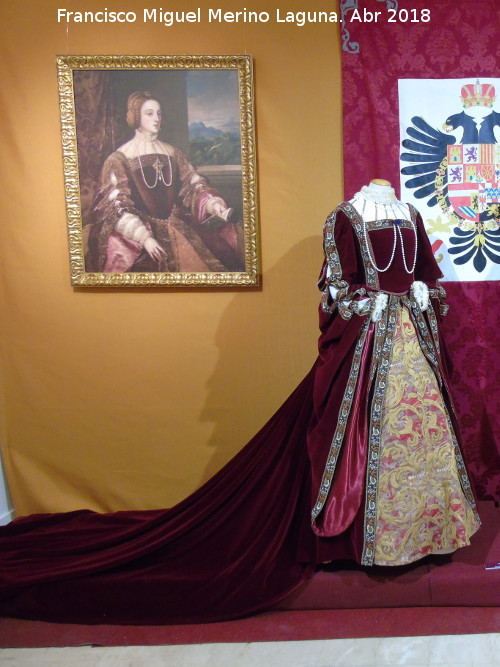
Isabel de Valois

Isabel Clara Eugenia de Austria

12 notes
·
View notes
Text
EMDT HISTORICAL TOURNAMENT


Character 1
Complete name: María Mayor Fernández de Cámara y Pita (Santiago de Sigrás, c. 1565- Cambre, Fabruary 21, 1643)
Status/Proffesion/Charge: Merchant, heroine of the defense of A Coruña against the attack of the English Counter Armada, honorary alférez/ lieutenant ( Philip II of Spain rewarded María Pita for defending the city by giving her the title and salary of a lieutenant)
Actress: Tania Villamarín
Episode: 2×05, Un virus de otro tiempo
Character 2
Complete name: Isabel de Portugal (Lisbon, October 24, 1503-Toledo, May 1, 1539)
Status/Proffesion/Charge: Infanta of Portugal, Empress Consort of the Holy Roman Empire, Queen Consort of Spain, Naples, Sicily and Sardinia, Titular Duchess Consort of Burgundy, Lady of Albacete
Actress: Marta Nieto
Episode: 2×13, Cambio de tiempo
#emdt historical tournament#emdt#duel 12#el ministerio del tiempo#emdt polls#maría pita#isabel de portugal#tania villamarín#marta nieto
5 notes
·
View notes
Photo


MCO cameos | Isabel de Portugal
#The Queen™#Isabel de Portugal#Les Mystérieuses Cités d'Or#The Mysterious Cities of Gold#mco gifs#16th century#mco cameos
14 notes
·
View notes
Text

THE DESCRIPTION OF SAINT ELIZABETH OF PORTUGAL
The Queen Consort
Feast Day: July 4
Elizabeth, daughter of Peter III of Aragon and Constance of Sicily, and the sister of three kings: Alfonso II and James II of Aragon and Frederick III of Sicily, was born in Aljafería Palace, Zaragoza, Kingdom of Aragon on January 4, 1271. At 10 years of age, she was given in marriage to Denis of Portugal, and bore two children, Alfonso, later became Afonso IV of Portugal, and Constance, who married King Ferdinand IV of Castile. Elizabeth is the great-niece of another saint - Elizabeth of Hungary.
Eventually, her prayer and patience succeeded in converting her husband, who had been leading a sinful life. She was modest in her dress, humble in conversation, and charitable towards the poor. It was her habit to provide lodging for pilgrims and to procure dowries for the poor girls of the kingdom.
One of the best moments of her life was the miracle of the roses. Caught one day by her husband, while carrying bread in her apron, the food was turned into roses. Since this occurred in January, Denis reportedly had no response and let his wife continue.
Elizabeth would serve as intermediary between her husband and Afonso, during the Civil War between 1322 and 1324. The Infante greatly resented the king, whom he accused of favoring the king's illegitimate son, Afonso Sanches. Denis was prevented from killing his son through the intervention of the Queen, when she, in 1323, mounted on a mule, positioned herself between both opposing armies on the field of Alvalade in order to prevent the combat. Peace returned in 1324, once the illegitimate son was sent into exile, and the Infante swore loyalty to the king.
In 1325, after the death of her spouse, she retired to the monastery of the Poor Clare nuns, now known as the Monastery of Santa Clara-a-Velha in Coimbra, and entered the Third Order of St. Francis, devoting the rest of her life to the poor and sick in obscurity. During the great famine in 1293, she donated flour from her cellars to the starving in Coimbra. She was also known for being modest in her dress and humble in conversation, for providing lodging for pilgrims, distributing small gifts, paying the dowries of poor girls, and educating the children of poor nobles.
She was a benefactor of various hospitals (Coimbra, Santarém and Leiria) and of religious projects, such as the Trinity Convent in Lisbon, chapels in Leiria and Óbidos, and the cloister in Alcobaça.
She died on July 4, 1336 on her way to Estremoz Castle, where she was supposed to settle a family quarrel. She was called to act once more as a peacemaker, when Afonso IV marched his troops against King Alfonso XI of Castile, to whom he had married his daughter Maria, and who had neglected and ill-treated her.
In spite of age and weakness, the Queen-dowager insisted on hurrying to Estremoz, where the two kings' armies were drawn up. She again stopped the fighting and caused terms of peace to be arranged. But the exertion brought on her final illness. As soon as her mission was completed, she took to her bed with a fever from which she died, and earned the title of 'Peacemaker' on account of her efficacy in solving disputes.
Elizabeth was beatified in 1526 and canonized a saint by Pope Urban VIII on May 25, 1625. Her feast is also kept on the Franciscan Calendar of Saints.
Since the establishment in 1819 of the Diocese of San Cristóbal de La Laguna (Canary Islands, Spain), Saint Elizabeth is the co-patron of the diocese and of its cathedral pursuant to the papal bull issued by Pope Pius VII.
#random stuff#catholic#catholic saints#franciscans#elizabeth of portugal#isabel de portugal#isabel de aragón
1 note
·
View note
Text
Paulo Rangel — eurodeputado (cessa funções na próxima segunda-feira), conhecido gay homofóbico e agora nomeado Ministro dos Negócios Estrangeiros — sobre o genocídio de Israel em Gaza.
Vamos ter um Ministro dos Negócios Estrangeiros que até ver tem sido negacionista de um genocídio transmitido ao vivo.
#Johanna speaks#Portugal#Palestine#Free Palestine#obviamente disse 'gay homofóbico' só para ser incendiária but also I'm right <3#eu vejo muita gente a partilhar aquele vídeo dele bêbado em Bruxelas como se isso fosse o mais grave lol. Grave é negar um genocídio.#se eu fosse ali o José Gusmão ou a Isabel Santos já me tinha levantado para lhe apertar o pescoço#eu vou ver se descubro de quando é este vídeo btw o pessoal que partilhou isto não deu data
19 notes
·
View notes
Text
The jumbled thoughts I had while watching Fast & Furious X, as someone who didn't watch any Fast and Furious movies before:
SPOILERS
- Car chase and machine guns within the 1st 10 minutes. Perfect. Exactly what I came here for.
(Did they film the initial rio scenes in portugal??? The extra's Brazilian accent was almost as weird as Joaquim de Almeida's lol)
-"The big strong man is having feelings" my friend when Vin diesel looked constipated while talking to Michelle Rodriguez
-If I didn't already know I was bisexual, Charlize Theron and Jason Mamoa's confrontation would make sure I became aware of it
-Jason momoa licked the knife and my friend and everyone else groaned. I proclaimed myself in love with him. I don't think I'm ever gonna live this down
-The truck flipped, and they willingly crashed into it. How are none of them dead?????
-I love Jason momoa's character. I really do.
-How tf is Vin diesel still alive???????
-How is anyone still alive!!!???
-I hope the cop dies (Aimes). Kill him brie
-Me watching Mia kick the asses of armed men "I love women"
-John Cena?!?! I literally yelled I'm the movie theater btw
-Shots 😂😂 I love Brie Larson
-What exactly is the plan brie?????
-Why is daniela melchior speaking with a Brazilian accent???? Why are Portuguese actors pretending to be Brazilian???
-Ludmila?!?!?!?
-Oh, Dante is crazy crazy. God, I love him
-Pete Davidson?!?!??!?!
-Really?? C'mon Michelle (Letty), priorities
-As a portuguese person, I'm very proud of the fact that the best moments of this movie take place in portugal.
-This is also the 1st time I've ever worried about the consequences of what happens to the country and the people that live there during an action movie.
They blew up the dam and now the entirety of Northern portugal is without power.......... fuck these guys.
-Aimes still working with Dante after 10 years and never trying to double cross him for more power (as is implied) sounds very gay to me and my friend. I ship it now. Love me some villainous gays!!
-My friend watching them leave the river: "good for them cause it's not everyone that leaves the Douro alive"
-Gal gadot?!? I read somewhere she dies In another movie. Does anyone die in this???
-The rock!!!!!!
-That's it?!?! Where's the rest of it???????
All in all:
Silliest thing I've ever seen in my life. I can see why people like it and will definitely be watching the next ones and binge watching the ones before!!
#fast and furious#fast and furious x#fast and furious 10#jason momoa#dante reyes#reyes is spanish so it's weird that a brazilian had that as a last name#also he was born in portugal and his dad is played by a portuguese actor#why not jyst make them portuguese immigrants in brazil instead of forcing joaquim de almeida into doing that terrible accent#hernan reyes#vin diesel#dom toretto#michelle rodriguez#letty#aimes and dante#daniela melchior#isabel neves#they could have casted a brazillian actress or just make her elena's half sister#instead we got daniela also pretending to be brazillian#elena neves#gal gadot#pete davidson#dwayne the rock johnson#charlize theron#mia toretto#brie larson#john cena#ludmilla#portugal
60 notes
·
View notes
Text

Elizabeth of Aragon, Queen of Portugal (1271-1336).
#reino de portugal#kingdom of portugal#house of barcelona#monarquía española#queen consort#isabel of aragon#queen of portugal#House of Ivrea#Anscarids#Casa di Ivrea#Reino d'Aragón#kingdom of aragon#reino de aragón#Portuguese House of Burgundy#Afonsine dynasty#casa de borgonha#dinastia alfonsina#saints#christianity#christianism#catholicism
4 notes
·
View notes
Text

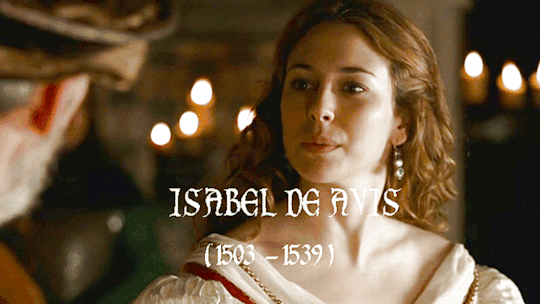

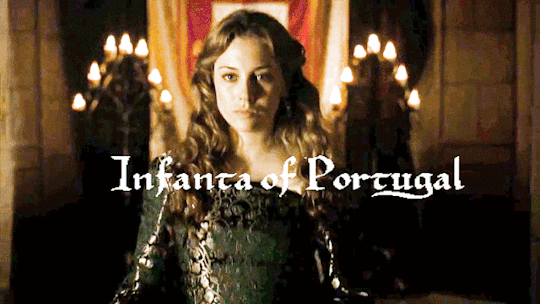










#katherine of aragon#catherine of aragon#catalina de aragon#isabella of portugal#isabel de portugal#mary i of england#felipe ii#spanish history#english history#charles v#henry viii#perioddramaedit
36 notes
·
View notes
Text
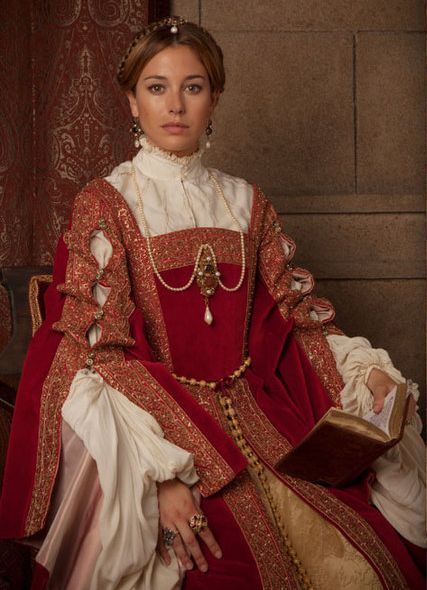

Period dramas dresses tournament: Red dresses Round 2- Group C: Isabella of Portugal, Carlos rey emperador (gifset) vs Rose DeWitt Bukater, Titanic (2) (gifset)
#period drama dresses tournament#tournament poll#tumblr tournament#polls#fashion poll#isabella of portugal#isabella de portugal#isabel de portugal#carlos rey emperador#rose dewitt bukater#titanic#red r2
8 notes
·
View notes
Photo






Os verdes anos / The Green Years
Paulo Rocha. 1963
Panoramic view
Elevador de Santa Justa, R. do Ouro, 1150-060 Lisboa, Portugal
See in map
See in imdb
#paulo rocha#os verdes anos#the green years#lisbon#portugal#isabel ruth#rui gomes#new portuguese cinema#manoel de oliveira#movie#cinema#film#location#google maps#street view#1963
41 notes
·
View notes
Text



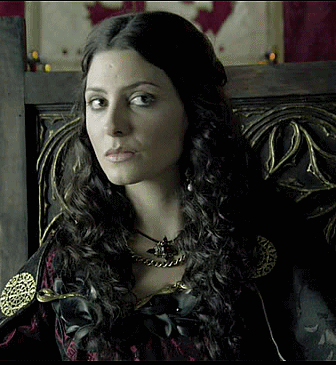
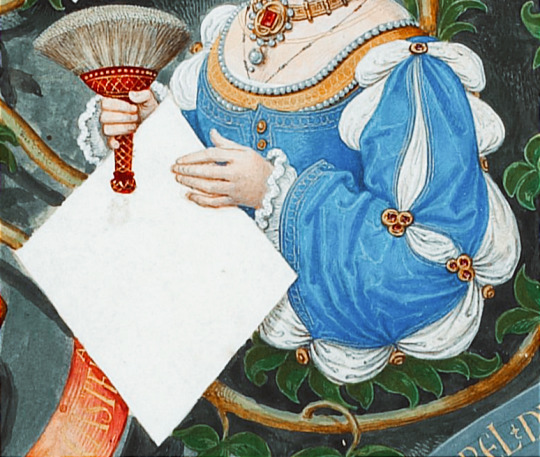
Juana of Portugal (1439-1475)
She was the posthumous daughter of King Duarte of Portugal and his wife Leonor of Aragon. Juana grew up in exile with her mother, due to the intrigues of the Portuguese court, and lived first at the Monastery of Santa María in Medina del Campo and later in Toledo, where Leonor of Aragon died. At the age of six, Juana returned to the Portuguese court of her brother Afonso V.
In 1455 the young Juana married her cousin Enrique IV of Castile, who had repudiated his first consort after thirteen years of marriage. The couple produced no children. The marriage was annulled on the grounds of an impotence that was specific rather than general, an impotence that applied only to Enrique’s relationship with Blanca of Navarre. Yet such an extraordinary explanation amounted to a case of maleficium (spell), with the clear implication that Blanca was the guilty party, and in addition she was obliged to leave Castile and return to Navarre.

Juana of Portugal was described as beautiful, cheerful and coquettish. The sources speak of the licentiousness introduced by the young Queen and her ladies in the austere Castilian court. They liked to use perfums, makeups, dresses that displayed too much décolletage, and flirting with men. One of her ladies, Guiomar de Castro, was King’s mistress, causing the anger of the Queen, and other, Mencía de Lemos, was Cardinal Mendoza’s mistress.
Six years after her wedding, Queen Juana was pregnant. Some say it was a miracle, others that it was the result of some sort of artificial insemination that the couple had tried, as was recorded by a german traveler. During this period, Juana insisted that Enrique's teenaged brother and sister, Alfonso and Isabel, forcefully be brought to the court and away from their sick mother. Many saw this as a way of making sure her daughter's path to the crown would encounter no obstacles. The Queen gave birth to a daughter named Juana, officially proclaimed heir to the Crown of Castile and created Princess of Asturias.
Queen Juana planned the marriage between her sister-in-law, Isabel of Castile, and her brother Afonso V of Portugal, and her daughter with her nephew Prince Joao. She wanted with these weddings an annexation of the Crown of Castile with the kingdom of Portugal.
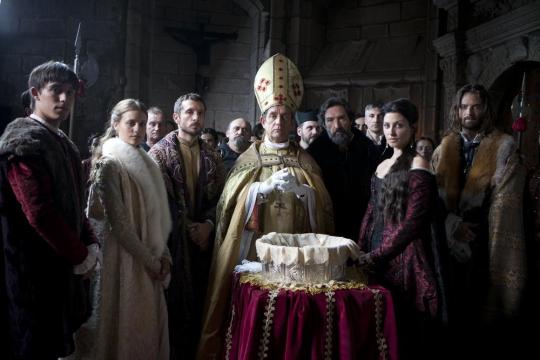
In early 1460s, Castilian nobles became dissatisfied with the rule of Enrique IV, and believed that Princess Juana was not King’s daughter. They called her la Beltraneja, a mocking reference to her supposed illegitimacy. Propaganda and rumour encouraged by the league of rebellious nobles argued that her father was Beltrán de la Cueva, a royal favorite of low background who had been elevated to enormous power by Enrique and who, by some, has been suggested as Enrique's lover.
Many nobles refused to recognise Princess Juana and preferred that Enrique instead name his younger half-brother, Alfonso as his heir. This was agreed to on the condition that Alfonso marries little Juana. Not long after this, Enrique reneged on his promise and began to support his daughter's claim once more. The nobles in league against him conducted a ceremonial deposition-in-effigy of Enrique outside the city of Avila and crowned Alfonso as a rival king.

Queen Juana and her daughter were removed from the court. They lived in various castles as hostages, separately or together, protected by a faction of the nobility. The love affair of Queen Juana with the Bishop Fonseca’s nephew, Pedro of Castile, and the birth of her two illegitimate sons, caused great scandal. As a result of the need to conceal the pregnancy of her illegitimate sons, Juana of Portugal is considered the inventor of the farthingale.
In 1468, Alfonso of Castile died and Princess Juana was stripped of her succession-rights. Her aunt, Infanta Isabel, was placed before her, on condition that Isabel marry a man chosen out by the monarch. Queen Juana and her daughter sent a formal appeal to the Supreme Pontiff. Enrique accepted to divorce his wife and send her to Portugal, but Juana remained in Castile as king's wife, though separated of her husband. Isabel married Fernando of Aragon with the opposition of Enrique IV.
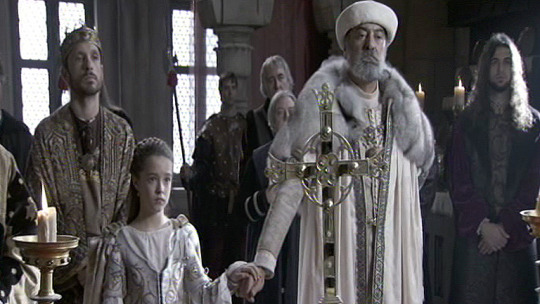
In 1470, Princess Juana was engaged and then married by proxy to the Duke of Guienne, brother of Louis XI of France. In the face of the French ambassador, King Enrique and Queen Juana swore before a crucifix that the Princess was their legitimate daughter. The French marriage never consummated, because the duke died two years later in France. Queen Juana always defended her daughter’s rights to the throne, and she had an active political participation. Queen Juana tried to get the support of nobles and cities, but with meager success and without palpable results. In 1474, Enrique IV died at the Alcázar of Madrid and rumors circulated that the late monarch had been poisoned, his wife and his daughter demanded an investigation. Queen Juana died a few months after her husband’s death at the age of 36. In the last months of her life, she lived at the convent of San Francisco in Madrid. The cause of her death is unknown.
Bárbara Lennie played Juana of Portugal in TV series "Isabel"
#juana de portugal#juana de avis#joan of portugal#women in history#spanish history#barbara lennie#Isabel tve#enrique IV#juana la beltranejs#juana de trastamara#juana de castilla
26 notes
·
View notes


